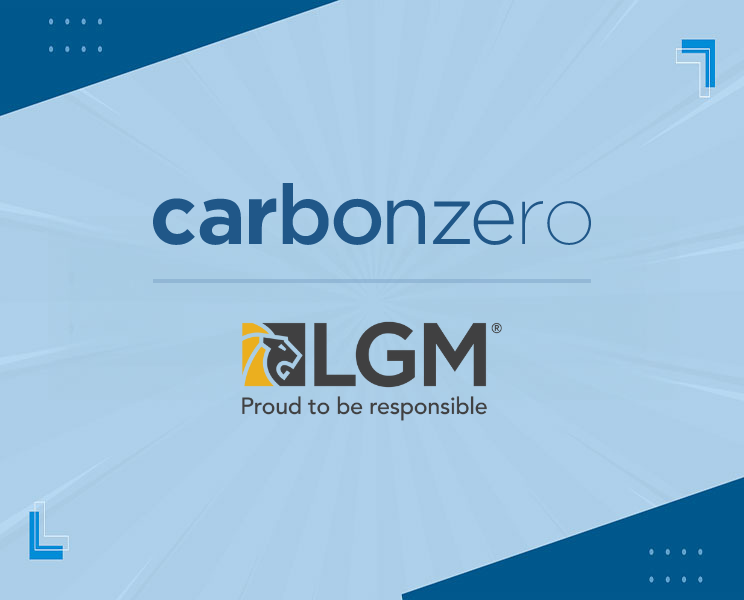As originally featured in Autosphere (November 28, 2023).
Author: Huw Evans
Dealers that take the time to develop and retain their employees are far more likely to succeed long term.
An ongoing issue impacting the automotive retail industry is employee turnover. Data illustrates that during 2022, the employee turnover rate at dealerships was a staggering 34%. Coupled with the fact that on average, a dealership loses around $500,000 each year due to the ongoing cycles of losing and having to hire and train new staff, and you begin to understand the magnitude of this problem.
The question is, how can dealers avoid this situation? Traditionally, the approach for many has been to focus on allocating efforts to marketing and sales promotions in an effort to attract more customers and sell more vehicles/service contracts. At the same time, the traditional mindset when dealing with financial losses, is to perform internal cutbacks, often trimming wages, benefits programs and staff head counts.
Yet, as Jake Stacey, Executive Vice President of Sales & Training at LGM Financial Services notes, this is often a short-term approach and often, doesn’t prove effective over longer periods of time, sacrificing productivity, reputation and by extension customer retention and loyalty. A more strategic approach she says, is to invest in engaged employees via targeted training tools and solutions. According to Gallup, doing so can improve dealership profitability by up to 23%, while systematically lowering turnover.
To get more insight into this practice, Autosphere sat down with Stacey. Here’s what she had to say.
Autosphere: Why do you think automotive retail has consistently witnessed high staff turnover rates?
Jake Stacey: I think there are three core things: Firstly, the automotive industry hasn’t done a great job of brand building at the retail level. The stigma of the used car salesman unfortunately, still lingers, particularly among consumers as it relates to the volume vehicle brands. Secondly, I don’t think the industry has done a great job overall at positioning automotive retail as a viable career option. It’s a shame because it is still one of the most important sectors of the economy, though I feel that view isn’t being shared and we need strong leadership within the industry to bring back that lustre. The third thing is the impact of government lockdowns due to the COVID-19 pandemic. The disruption we experienced within the industry was massive and extremely unsettling, and I feel a lot of people are still trying to find their feet again.
AS: Speaking of the COVID-19 lockdowns, what do you think are the biggest realities for dealers in terms of retaining employees today?
JS: I think employee retention today has unfortunately, become far more transactional than it once was. The loyalty to brands and loyalty to employers isn’t the same as it once was and I don’t think this is by any means unique to automotive retail, it’s across the spectrum. What I would say, is that if your organization is struggling with retention right now, to take a look at the dealer groups that consistently demonstrate high levels of employee loyalty. There are three things they tend to do really well. Firstly, their onboarding is incredible. When new people come onboard, these dealers do not put them into their roles right away. Instead, they place them in an internal training academy, where they teach them how things are done at their businesses, essentially defining what’s required in order to work there. What’s key here, is to be clear and concise about what you expect of your employees when they come on board.
Secondly, their underlying commitment to their staff as well as ongoing training and development is an essential factor. One big dealer group we work with, really is top shelf when it comes to onboarding, ongoing learning, and development, with clear guidelines and clear performance expectations. Additionally, while many new hires are recruited to the sales floor, within a few years they have moved to fixed operations, the business office, the BDC or used car operations. This group demonstrates time and again that they can retain people, build loyalty through those activities, and transfer people into different business units across the group. When you do that, you have a population of employees within your organization that can work in many different areas, instead of having just a single focus. Another key factor when it comes to retention is offering good compensation for the work that’s performed. You need to provide employees with a compensation package that allows them to concentrate on their job, instead of worrying about putting food on the table and paying their bills. There are numerous studies linking that to mental health and wellness. That’s why it’s so important to create an employment environment where people feel safe and valued. Because, when you do, it builds loyalty and is far more likely to result in your staff being committed to achieving excellence.
AS: Why do you feel it is so tempting for dealers to try and cut internal costs due to high staffing turnover and instead promote marketing efforts?
JS: This is an age-old problem, but when you look at the dealers who don’t have this issue, they are the ones that excel at onboarding, training, developing and supporting their staff. Being appreciated and valued hugely matters today. The whole concept of “you’re lucky to have a job,” is disappearing, especially as we see ownership transitions happening at many stores. We’re seeing that younger dealer principals and general managers have a different view. They tend to believe that if you demonstrate to somebody on your team that you value them and allow them to share in the success of the business, you’re going to see turnover plummet. The best dealer principals I know are the ones that share in their financial success with their employees. By creating a corporate structure that enables profit sharing or, when a certain milestone is achieved the rewards are distributed across the organization you are far more likely to retain your staff. These are the dealers that are focused on the long-term and ultimately, those who will be the most successful. By contrast, those that have taken advantage of the high margins on vehicles over the last few years and have chosen short term profit margins over employee development are the ones that will continue to see high staff turnover and won’t be as successful or profitable long-term.
AS: It’s great to see that, but sometimes that old-school, transactional mindset creeps back in. What do you feel can be done to permanently changing things and prevent slipping back into old habits when it comes to employee engagement and development?
JS: I think a lot of that has to do with leadership at the senior level. There are very few organizations at the retail level that tend to invest in their leaders, and I think that’s reflected in the culture of the business. Those that send their leaders on executive leadership courses and programs and work on developing and enhancing their management teams, are the ones that will move forward and are less likely to slip back into old habits. A key issue when it comes leading people, is to know how to actively listen and ask the right questions, as well as knowing that the people who work for you, feel confident and understand what is expected of them. Additionally, they need to ensure that those same people have the competency to deliver on what’s expected of them, because they are receiving the right learning and development solutions. The foundation of leadership development is how to effectively lead and inspire people but that often requires having a solid plan and working with partners who can help you achieve your goal. That’s why specific leadership development programs are so important—where dealers can work with people who understand their business—can help provide them with clarity in achieving their objectives and work with them to create a blueprint to get there. The automotive retail sector is a very unique animal, which is why it’s essential to work with a team like ours—one that understands what’s required from a practical business standpoint to successfully implement leadership and development programs for automotive retail executives and employees.
AS: Looking specifically at the business office, is there anything to consider in that regard?
JS: I think when we look at F&I, the same principles apply as they do to overall leadership and employee engagement within the organization or dealership. Recently, we had a classroom of Financial Services Managers from across our brands, ranging from BMW to Kia. Feedback showed that every one of them was excited to get back to their stores and implement the practices they had learned during the training and share the results with us here at LGM. Good retailers have good managers who are viewed as key members of the leadership team and respect the role they have. That’s why we feel it’s so important to have a Director of Financial Services who is responsible for the entire F&I operation. They need to be highly experienced, highly educated and have the ability to set the tone for the entire department. Ideally, they have experience in both fixed ops and sales. They need to be that single point of contact for your suppliers, lenders, product partners, as well as training and development providers. It has been consistently demonstrated that those dealers who have a Director of Financial Services tend to perform far better than those who have people in the business office reporting to a general sales manager, who may not understand all the nuances and aspects of the F&I department.
AS: Are there any case studies/evidence you’d like to share that shows how beneficial consistent, quality investment in tools, training and resources for employee growth and well-being can create real-world success?
JS: I’ll give you a couple of examples. One of the volume brand OEMs we work with, has shown a very strong commitment to financial services right down from the highest corporate level. And that’s been reflected in their dominance within the F&I space. For example, their penetration rates on their mechanical breakdown Protection Service Advantage (prepaid maintenance program) are far outpacing some other brands in the marketplace. And we’ve seen those penetration rates translate into strong customer retention and loyalty, which is a direct result of that OEM’s decision to invest in their F&I offerings. On the luxury side, another prominent OEM has committed to having the best products and best experience for their customers, as well as some of the most highly educated Financial Services offices among luxury brands in the country. Both these brands have set a benchmark by deciding what they wanted to do and going after it with a steadfast commitment and resilience to deliver the best customer experience. We feel very privileged to be a partner of both of those brands and it’s been very rewarding working with them. They have shown a deep commitment to financial services and investing in their people, which has translated into exceptional customer service and success in the marketplace.


